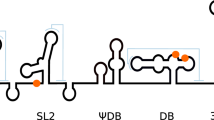Abstract
In utero fetal infection of rubella virus (RV), a positive-stranded RNA virus, frequently induces birth defects if contracted in the first trimester of pregnancy. The underlying mechanism of RV-induced birth defects is not known. Birth defects are also common in certain DNA viral infections such as human cytomegalovirus (HCMV). During HCMV infection, one of its proteins interacts with a cell growth regulatory protein, the retinoblastoma protein (Rb) and stimulates DNA synthesis which is associated with chromosomal damage and cellular mitotic arrest. These affects have been implicated in HCMV induced teratogenesis. Since RV and HCMV both cause teratogenesis, we postulated that during RV infection, a virus-encoded protein might interact with Rb and affect fetal cell growth. In the present study, we have identified a known Rb-binding motif, L×C×E (LPCAE) in the carboxy-terminal half of the putative replicase (NSP90) of RV and demonstrated that the C-terminal region specifically binds to GST-Rb in vitro. Further, by coimmunoprecipitating NSP90 and Rb using specific antibodies to respective proteins, we have confirmed that NSP90 specifically binds to Rb in vivo as well. In addition, RV replication was shown to be less in null-mutant (Rb−/−) mouse embryonic fibroblast cells than in wild-type (Rb+/+) cells, suggesting a possible physiological role for this interaction. Thus, in facilitating RV replication, binding of NSP90 to Rb potentially alters the cell growth regulatory property of Rb, and this could be one of the initial steps in RV-induced teratogenesis.
Similar content being viewed by others
References
Frey T.K., Advances in Virus Res 44, 64–159, 1994.
Gregg N.M., Trans Ophthalmol Soc Aust 3, 35–46, 1941.
Munro N.D., Sheppard S., Smithells R.W., Holzel H., and Jones G., Lancet 2, 201–204, 1987.
Ray C.G., in Braunwald E., Isselbacher K.J., and Petersdorf R.G. (eds). Principles of Internal Medicine. McGraw-Hill, New York, 1987, pp. 684–686.
Jault F.M., Jault J-M., Ruchti Fortunato E.A., Clark C., Corbeil J., Richman D.D., and Spector D.H., J Virol 69, 6697–6704, 1995.
Kamiya S., Tanaka J., Ogura T., Ogura H., Sato H., and Hatano M. Arch Virol, 89, 131–144, 1986.
Fortunato E.A., Sommer H.M., Yoder K., and Spector D.H., J Virol 71, 8176–8185, 1997.
Taya Y., TIBS, 22, 14–17, 1997.
White R., TIBS, 22, 77–80, 1997.
Wang J.Y.J., Knudsen E.S., and Welch P., Advances in Cancer Res 54, 26–85, 1994.
Plotkin S.A. and Vaheri A., Science, 156, 659–661, 1967.
Nakhasi H.L., Rouault T.A., Haile D.J., Liu T-Y., and Klausner R.D., New Biol 2, 255–264, 1990.
Chen P-L., Riley D.J., and Lee W-H., Genes & Dev 10, 2794–2804, 1996.
Dominguez G., Wang C-Y., and Frey T.K., Virology, 177, 225–238, 1990.
Durfee T., Becherer K., Chen P-L., Yeh S-H., Yang Y., Kilbum A., Lee W-H., and Elledge S.J., Genes & Dev 7, 555–569, 1993.
Singh N.K., Atreya C.D., and Nakhasi H.L., Proc Natl Acad Sci USA 91, 12770–12774, 1994.
Forng Y.T, and Frey T.K., Virology, 206, 843–853, 1995.
Atreya C.D. and Pirone T.P., Proc Natl Acad Sci USA, 90, 11919–11923, 1993.
Ponte P., Ng S-Y., Engel J., Gunning P., and Kedes L., Nucleic acid Res 12, 1687-, 1984
Gillam S. (Genbank Accession No. X72393).
Johnstone P. Cloning and sequence analysis of rubella virus nonstructural protein coding region. Ph. D. Thesis, University of Surrey, UK, 1994.
Pugachev K.V., Abemathy E.S., and Frey T.K., Arch Virol 141, 1165–1180, 1997.
Lamb R.A. and Krug R. in Fields B.N., Knipe D.M., and Howley P.M. (eds). Field's Virology. Lippincott-Raven publishers, New York, pp. 1353–1396.
Author information
Authors and Affiliations
Rights and permissions
About this article
Cite this article
Atreya, C.D., Lee, N.S., Forng, RY. et al. The Rubella Virus Putative Replicase Interacts with the Retinoblastoma Tumor Suppressor Protein. Virus Genes 16, 177–183 (1998). https://doi.org/10.1023/A:1007998023047
Published:
Issue Date:
DOI: https://doi.org/10.1023/A:1007998023047




